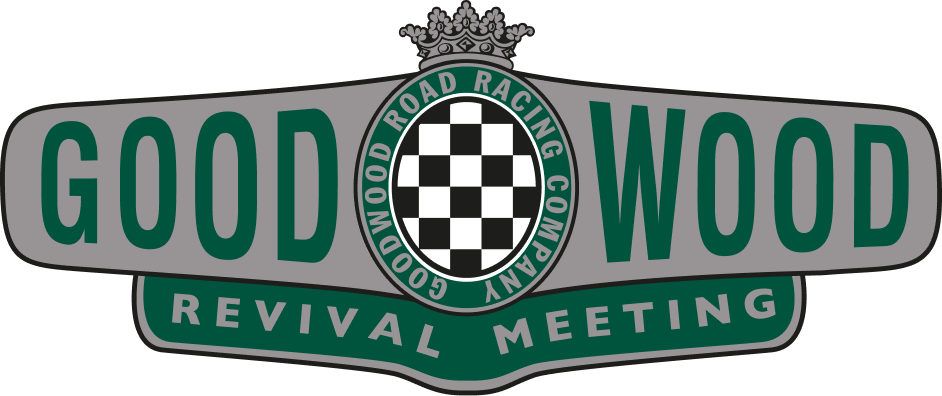The 1894 Paris-Rouen Trial, the very first competitive motorsport event
 Doug Nye
Doug Nye
At each year’s Goodwood Festival of Speed we like to celebrate appropriate motor sporting anniversaries. This year’s Festival will – amongst other landmark events – celebrate perhaps one of the most significant ever, because 2019 marks no fewer than 125 years since the very first mass-entry competitive motor sport event of them all…

That was the Concours Paris-Rouen – probably better known as the Paris-Rouen Trial – which took place on Sunday, 22nd July, 1894. One has to hand due credit to the forward thinking, enterprising and dynamic French enthusiasts who had begun to ask themselves if there might be something of real value about these new-fangled horseless carriages as a way of getting from one place to another without the inconvenience of the railway, or the horse.
There’s some evidence that on 30th August, 1867, a pioneering match race was run over eight miles of public roads from Ashton-under-Lyne to Old Trafford, Manchester, between a pair of self-propelled road carriages, supposed winner being Isaac Watt Boulton’s steam locomotive.
Two truly pioneer motor races had been run beside the river Seine in Paris as early as 1887 and 1888, organised by Paul Faussier (or ‘Fossier', of the La Vélocipède cycling magazine. The Count de Dion won the first, but his little steam-engined quadricycle was the only starter. Fossier/Faussier persevered, and in 1888 a second ‘La Vélocipède’-sponsored horseless-carriage race was run – this time from Neuilly to Versailles (20kms – 12.4 miles). This time it attracted two starters; the Count de Dion winning again, this time in a three-wheeler, defeating a Serpollet – both steam-powered.
Leon Serpollet drove one of his steam cars all the long way from Paris to Lyons, while Doriot and Rigoulot conducted a Peugeot from Paris to Brest in 1891. As pioneering racing historian Gerald Rose emphasised, neither trip was without “…adventures and vicissitudes which would astound the modern motorist” (modern by the time he penned those words, in 1910, that is).
He continued “Yet the vast majority of the public had no idea of the capabilities of the cars. Some organised trial or competition was necessary to show the public what these self-propelled vehicles could do, or to what extent they were suitable for the private owner, and whether they could, indeed, be looked upon as a serious substitute for the horse-drawn carriage…”.

Albert Lemaitre (left), ‘on’ his Peugeot Type 7, finished second in the pioneering 1894 Paris-Rouen Trial. Images courtesy of the GP Library.
Pierre Giffard was editor of Le Petit Journal, a very popular magazine of the time. Through it he had organised cycling competitions to attract public attention, and now he decided to do the same for the motor car. Writing under the pseudonym “Jean sans Terre”, in the issue of Le Petit Journal for 19th December, 1893, he proposed organisation of a competition for Voitures sans Chevaux (Carriages – or ‘Cars’ – without Horses) during the following year. First prize was to go to the car which the Judges deemed best to be “without danger, easily handled, and of low running cost”. Initially the objective was to cover 50km (31 miles) in three hours, later amended to four because many would-be competitors deemed the original average speed of 10mph “dangerously high”. The final route from the Porte Maillot, Paris, to Rouen would total 126km, nearly 80 miles. Each car’s finish in terms of coachwork and painting was considered immaterial – all that was required was that the car should move under its own power.
Giffard’s entry window closed on 30th April, 1894, by which time no fewer than 102 entries had been received. Their listed means of propulsion contains some wondrous aspiration. Rousselet of Paris entered a car powered by ‘gravity’, Roussat of Paris power source was described as ‘hydraulic’, Victor Popp’s was ‘compressed air’, Leval’s was “Baricycle moved by the weight of the passengers”. Loubiere’s was by “multiple system of levers”, De Prandieres of Lyons enigmatically ‘Automatic’, while Cesar Barthelemy of Yebles cited a ‘system of pendulums’. Others entered machines variably propelled by ‘system of levers’, a ‘combination of animate and mechanical motor’, ‘electro-pneumatic’, ‘weight of passengers’, ‘high pressure gas’ and… ‘self-acting’… The vast majority, however, cited petrol, or steam.

Auguste Doriot’s Peugeot which finished 3rd in the Paris-Rouen Trial of 1894. Image courtesy of the GP Library.
The run to Rouen was fixed initially for 1st June, but was then postponed to 7th June, before it became very apparent that most competitors would never be ready in time. So a vote was held to fix an alternative date, and by 68 votes to 13 the date of 22nd July was chosen.
To give the public as much chance as possible to see the cars, an open-air exhibition was held on 18th July – 2pm-6pm in the Rond-Point Inkerman at Neuilly, on the outskirts of Paris. Twenty-six cars – all that were ready – made it to Neuilly, where they were displayed to a tremendous crowd. Eliminating trials began next day, 17 cars tackling five different routes, ranging from 29.1 miles to 34.7 – out to Mantes, Rambouillet, Corbeil and Precy-sur-Oise.
Dividing the entry was intended to minimise possible disruption out on the roads, but of the 17 starters only 13 finished. On the Friday six more cars started, four going to Mantes, two to Corbeil. All six were successful and so the entry for the Trial proper that Sunday grew to 19. Two more hopefuls clattered up to the Boulevard Maillot startling on the Saturday, and both qualified, running from Paris to Poissy and back via Maisons-Laffitte. And so of the 102 entries, 21 would finally start the competitive run to Rouen that Sunday.
The programme was that the cars should assemble at the Porte Maillot, Paris, at 7-7.45am. The start would be given at 8am, and at around mid-day they should reach Mantes for a lunch break…
The Trial would restart around 1.30pm and nearer 8pm they should finish line in the Champs de Mars, Rouen. The weather was fine and dry, and a huge crowd assembled to watch the start.

Count Albert de Dion’s steam tractor, built by his De Dion, Bouton & Trépardoux company, reached the finish first in the 1894 Paris-Rouen Trial but shared the £25,000 first prize with Peugeot. The Count’s elderly father - the Marquis Louis Albert Guillaume de Dion de Wandonne – is seated in the towed carriage body (far right). Beside the Count up front is his engineer/mechanic.
As it approached, Maurice Le Blant – who had entered two cars – was still without a qualified driver for one of them. Gerald Rose emphasised how “It was only with the greatest difficulty that drivers could be found for so many cars at the same time”. Le Blant’s brother Etienne was struggling to control one of their evidently clumsy steam vehicles, having already mounted a footpath and demolished a bench “…to the great dismay of Monsieur Cassigneul, the officially appointed observer for that car…”.
By 7.50am, 19 entries – the Le Blants excepted – had formed a line for the start, with the Count Albert de Dion’s steam tractor at its head. He set off at 8.01am, followed by the other 18 at 30-second intervals. Just after last man Roger had started, the two Le Blant steamers appeared and were sent off after the rest without delay.
All went well until Nanterre, where de Prandieres’ Serpollet steamer damaged an axle and retired. The big, heavy and powerful de Dion steam tractor rumbled along consistently at the head of the pack. A ten-minute stop took place in the Forest of Saint Germain, enabling the riding observers to swop cars and compare notes.
At Meulan another compulsory 15-minute stop preceded the run to lunch at Mantes. The de Dion steam tractor arrived there first, hotly pursued by Lemaitre’s little Peugeot No. 65, followed by Emile Levassor’s Panhard & Levassor No. 15. After the post-prandial restart the de Dion was again first at Vernon, Doriot’s Peugeot No. 28 second. At Gaillon the Scotte omnibus burst a boiler tube and retired.
At Igoville the de Dion took a wrong turning and ran into a potato field, but despite this excursion, at 5.40pm it still finished first in the Champs de Mars, Rouen. Five minutes later Lemaitre’s far less powerful little Peugeot crossed the line, followed by Doriot’s. The last runner, Archdeacon’s Serpollet steamer, finally wheezed home in the dark, at 10.10pm. Only four entries failed to finish… including poor Etienne Le Blant.
No official times were issued, no average speeds really confirmed, but the objective had been “to keep up a reasonable rate of progress”.

Emil Kraeutler’s 3hp Peugeot was placed 6th overall in the first mass-entry/full field competitive motorsports event, 1894. Image courtesy of the GP Library.
The issue of Le Petit Journal for 24thJuly 24, 1894, then declared the Jury’s decision regarding the result. First prize of 5,000 Francs – then £200, a value of around £25,000 today – was split between Panhard & Levassor and Peugeot “both employing the petrol motor invented by Herr Daimler of Wurtemburg”. Second prize of 2,000 Francs – £80 then, around £10,000 today – went to Messrs De Dion, Bouton et Cie “… for their interesting steam tractor which draws a carriage like a horse, and develops a speed absolutely beyond comparison, especially uphill.
“The De Dion tractor had been demoted from first place since it did not altogether comply with the conditions of the competition – a mechanic being necessary to look after the engine, as well as a driver…”.
And let’s hear it for Maurice Le Blant who was rewarded for his tough time with third prize – 1,500 Francs – £60 then, £7,500 today – “for his nine-seated car on the Serpollet system”.
But the outstanding feature of that pioneering Paris-Rouen Trial was the extraordinary reliability of the competing cars, 21 starters (at the dawn of motoring) covering 80 miles with only four struck down by failure. Every one of the 13 petrol-engined cars completed the distance. It was rated a huge success. The patrician Automobile Club de France was founded in its afterglow, and they organised a true motor race for the following year.

Gratien Michaud’s Peugeot was one of five which featured so strongly in the Paris-Rouen Trial of 1894.
And that first great road race was run on 11-13th June, 1895. Its route was from Paris all the way to the Atlantic port city of Bordeaux… and back, totalling a stupendous 732 miles. And its eventual winner – having driven solo the whole way – was Emile Levassor in his Panhard. That epic drive took him 48 hours 48 minutess, and he averaged 15mph. One should never accuse those pioneering French motor sportsmen of not thinking big…
Photography courtesy of the GP Library.
Doug Nye
Motorsport





